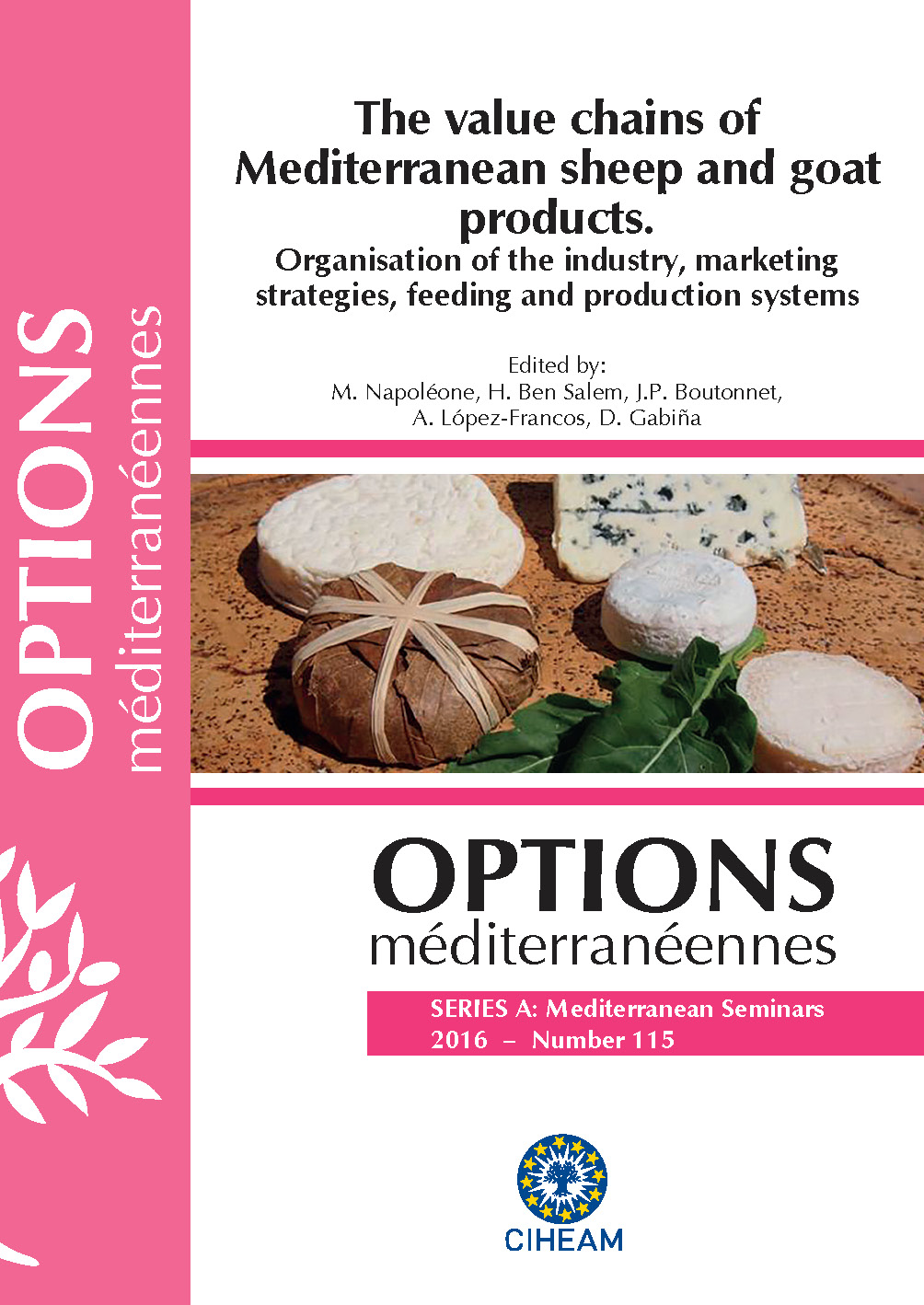| Article précédent | p. 587-590 | Article suivant |
Effect of water stress on the nutritive value of three Lotus corniculatus L. populations at the regrowth stage
Lotus corniculatus L. is a promising drought resistant forage legume of high nutritive value. The aim of this study was to estimate the effect of limited irrigation on the nutritive value at the regrowth stage of three natural populations of L. corniculatus growing at different elevation in northern Greece. Plants of these populations were tested under two irrigation levels: (1) watered up to soil field capacity and (2) at 40% of field capacity for three months. Plant materials of L. corniculatus were randomly collected at the regrowth stage in October 2013 from each population at each treatment and were analysed for chemical components. There was no significant difference among the populations (across irrigation levels) in their CP, NDF, ADF, and ADL, content. On the other hand, limited irrigation had significantly decreased NDF (-43 g/kg DM), ADF (-28 g/kg DM) and ADL (-10 g/kg DM) contents in all tested populations, while it did not affect the CP content. According to the results, the phenol (TPH) and tannins (TT) concentrations were significantly higher in Drama (8 and 6.1g/kg DM) and Taxiarchis population (10.2 and 8 g/kg DM), compared to Kilkis (4.7 and 3.4 g/kg DM), while in condensed tannins (CT) concentration there was no significant difference. Inversely, limited irrigation significantly increased TPH, TT and CT concentrations in all tested populations compared to those received full irrigation It can be concluded that limited irrigation decreased fiber content of L. corniculatus, but increased TPH, TT and CT concentrations. Thus, the next step is to evaluate the water stress on forage yield of L. corniculatus and its potential regrowth.
Lotus corniculatus L. est une légumineuse fourragère prometteuse, résistante à la sécheresse et à forte valeur nutritive. Le but de cette étude était d’estimer l’effet d’une irrigation limitée sur la valeur nutritive au stade de repousse pour trois populations naturelles de L. corniculatus poussant à différentes altitudes dans le nord de la Grèce. Des plantes de ces populations ont été testées sous deux niveaux d’irrigation: (1) irriguées jusqu’à atteindre la capacité de rétention du sol et (2) à 40% de capacité de rétention pendant trois mois. Les matériels végétaux de L. corniculatus ont été collectés au hasard au stade de repousse en octobre 2013 pour chaque population à chaque traitement et ont été analysés pour les composants chimiques. Il n’y a pas eu de différence significative entre les populations (entre niveaux d’irrigation) pour les teneurs en CP (protéine brute), NDF, ADF, et ADL. Par ailleurs, une irrigation limitée avait baissé significativement les teneurs en NDF (-43 g/kg MS), ADF (-28 g/kg MS) et ADL (-10 g/kg MS) dans toutes les populations testées, tandis que ceci n’avait pas affecté la teneur en CP. Selon ces résultats, les concentrations en phénol (TPH) et tannins (TT) étaient significativement plus élevées chez les populations Drama (8 et 6,1 g/kg MS) et Taxiarchis (10,2 et 8 g/kg MS), comparées à Kilkis (4,7 et 3,4 g/kg MS), tandis que la concentration en tannins condensés (CT) ne montrait pas de différence significative. Inversement, une irrigation limitée augmentait significativement les concentrations en TPH, TT et CT chez toutes les populations testées en comparaison à celles recevant la pleine irrigation. On peut en conclure qu’une irrigation limitée diminuait la teneur en fibre de L. corniculatus, mais augmentait les concentrations en TPH, TT et CT. Ainsi, l’étape suivante consiste à évaluer l’effet du stress hydrique sur le rendement fourrager de L. corniculatus et sa repousse potentielle.
- [ Afficher ]
- [ Télécharger ]
- [ Exporter la citation ]
Vous pouvez télécharger la citation au format :
- [ Imprimer ]
-
Mots-clés
LEGUMINEUSE, SECHERESSE, TANNINCiter cet article
Parissi Z.M., Kyriazopoulos A.P., Abraham E.M., Karatassiou M., Lazaridou M. Effect of water stress on the nutritive value of three Lotus corniculatus L. populations at the regrowth stage. In : Napoléone M. (ed.), Ben Salem H. (ed.), Boutonnet J.P. (ed.), López-Francos A. (ed.), Gabiña D. (ed.). The value chains of Mediterranean sheep and goat products. Organisation of the industry, marketing strategies, feeding and production systems. Zaragoza : CIHEAM, 2016. p. 587-590. (Options Méditerranéennes : Série A. Séminaires Méditerranéens; n. 115). Joint Seminar of the Subnetworks on Nutrition and on Production Systems of the FAO-CIHEAM Network for Research and Development in Sheep and Goats, 2015/06/16-18, Montpellier (France) . http://om.ciheam.org/om/pdf/a115/00007337.pdf



